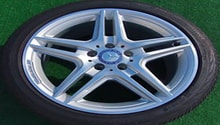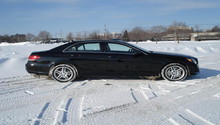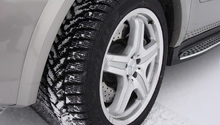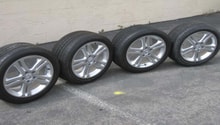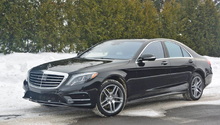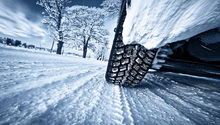Mercedes-Benz E-Class: Tire Modifications and Size Calculator
Tires, it would be impossible to list how many models and variations exist. Read this guide to start in the right direction when considering the best-suited tire for your Mercedes-Benz E-Class.
This article applies to the Mercedes Benz E-Class w211/w212 (2002-Present).
Tires come in an enormous range of sizes, tread patterns, compounds, and they even serve different purposes. There are a number of options available today for enthusiasts looking to replace their stock wheels and tires, but this doesn't mean that it has to be a daunting task. By conducting a little research and figuring out what you want from a set of tires, as well as wheels, you can easily identify the best set for you and your E-Class' particular needs. In this article is the compiled guide to give you a run-down on how to pick new tires.
Types of Tires
Tires fall into three main categories:
- Performance/summer tires are best for drivers who want speed and maneuverability on the road. These tires have more narrow and shallow channels, allowing for better grip. They normally consist of a medium-soft rubber compound, and their tread pattern is designed to offer positive grip in a temperature range of 70 to 110 degrees Fahrenheit. These types of tires are normally outfitted on performance-oriented vehicles and offer decent wear-life. However, performance tires don't always mean sticky rubber for quick acceleration; they may also include low-friction and low-resistance tires that will help your Mercedes-Benz deliver high MPG gains.
- Winter/snow tires have a high sipe density (thin 90 degree cuts along the tread), which gives better traction in the winter. They're pricey, but a smart investment if you do a lot of driving in more frigid climates. Strictly for temperatures below 60 degrees, these tires are designed with an extra soft compound that will grip the road even at below freezing temperatures. These tires excel at dispersing water, sleet, snow, and even ice due to their quite dramatic tread pattern and symmetry around the sidewall. Winter/snow tires should be used in cold, snowy conditions only.
- All-season tires succeed at working across a wide range of temperature, and work well in wet as well as slick conditions. They're a good choice if you live in mild geographical areas where climate isn't extremely cold or extremely hot. If you're seeking a tire with year-round grip and a long tread life without compromising a smooth ride, the all-season tire is your best bet. Keep in mind, however, some automotive experts would refer to these as "not good for summer, and not good for winter".

Figure 1. Continental ExtremeContact. 
Figure 2. Bridgestone Blizzack WS80 winter tires. 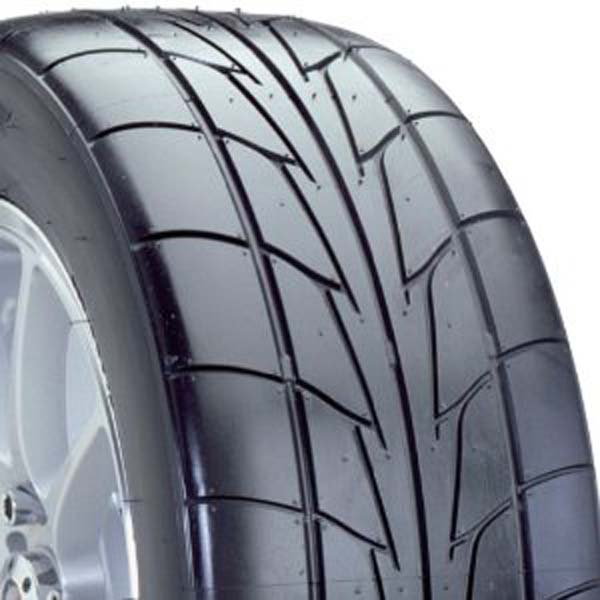
Figure 3. Continental ContiProContact all-season tires.
Understand Tire Sizes
On the sidewall of every tire there is a set of numbers and letters that reveal the identity of the tire. Understanding how to decipher this code is key to knowing your proper tire fitment, as well as to make an educated tire purchase for your Mercedes. Parameters like aspect ratio, tire construction, and wheel diameter make up the tire's identity. Larger aspect ratios mean bigger tire sidewalls. Low profile (and some performance) tires have thin sidewalls, which make them look sleek but often decreases the ride quality.
Also, if the tire is too big for your car, it can rub and wear out prematurely. If you want to move to a wider wheel and tire setup, keep in mind the total diameter of the package and try not to stray more than 2% to 3% in total diameter from the original tire.
Here is an example (P185/60R15) of determining a tire's size:
- The letter "P" at the beginning indicates that the tire adheres to specific U.S. manufacturing standards for "passenger cars."
- The width of the tire is the first number. In this case it is 185 inches.
- Next is the aspect ratio (60). This number tells you that the height is equal to 60% of the width of the tire.
- The letter "R" means radial. The layers run radially across the tire.
- The final number is the wheel diameter, or the size of the wheel when it's measured from one end to the next. This wheel has a 15-inch diameter.

Figure 4. Example of tire size, letters, and numbers on the sidewall of a tire. 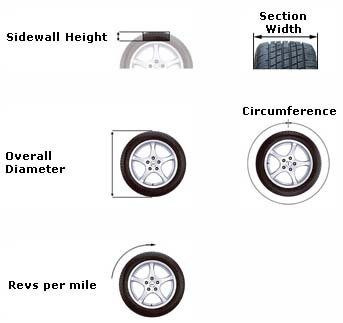
Figure 5. Tire size parameters.
Final Considerations
If you purchase bigger tires for your Mercedes-Benz E-Class, your odometer and speedometer may not be calibrated correctly to the new tires. To fix that, you can use a tire size calculator to determine how your speedometer reading will change if you alter the size of your wheels and tires. Here's what you can do to determine what tires you can install and how to re-calibrate your odometer as well as speedometer:
- Bring your E-Class to a local dealership to have the tire sizes calculated or speedometer and odometer re-calculated.
- Perform a self-calculation by driving your E-Class between mile markers on the highway, and then re-calibrating based on time as well as distance.
- Use the online tire size calculator from DiscountTire.com.
Additionally, it is important to notify any subsequent buyers of your E-Class if the speedometer and odometer are not correctly calibrated to give them the correct information.
Featured Video: Difference Between Summer, All-Season, and Winter Tires
Related Discussions, and Sites
- Help With Tire Sizes - MBWorld.org
- Front Tire Clearance - MBWorld.org
- Tire Size Question - MBWorld.org
- How to Decipher Your Tire's Sidewall - JustTires.com
- Tire Size Calculator - DiscountTire.com

